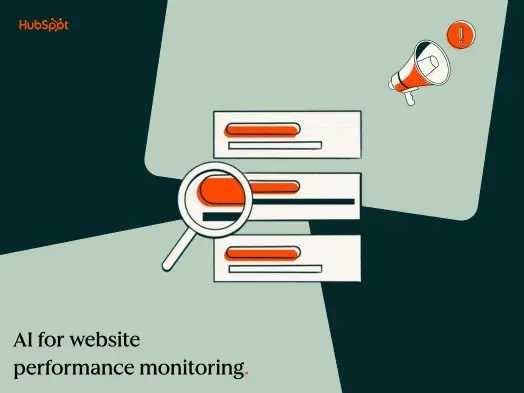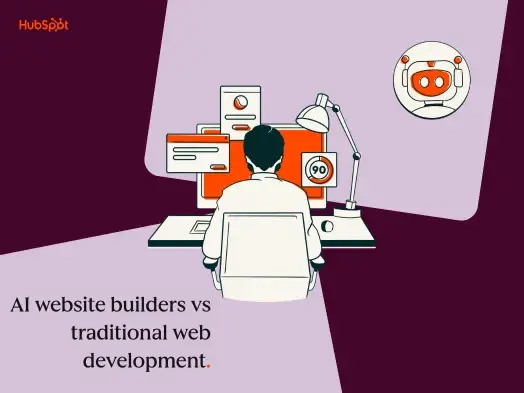Using AI in My Workflow
As someone with a technical background, my day-to-day work usually involves explaining complex coding stuff in a way that makes sense to everyday users. But when I started exploring the idea of using AI to build a landing page, it felt like I was stepping into a whole new world.
As a technical writer, I often have to make sure things are precise and accurate. But AI? It‘s more about letting the tech do its thing, which was exciting for me. I’m used to having control over the process, knowing exactly how each part of a website is built. With AI, I had to learn to trust the technology to understand what I wanted and create something functional and visually appealing.
Suddenly, I was looking at web design in a whole new way. Instead of spending hours coding and tweaking, I was guiding an AI tool to create a landing page that just spits out the code. This shift didn't just change how I worked; it changed how I thought about my work. It was like discovering a shortcut that still gets you to the same destination but with less time and effort.
This journey into AI-driven design has been a mix of learning, adapting, and being amazed by what technology can do. It‘s not just about making my job easier; it’s about opening up new possibilities and ways to approach problems. And that‘s what I’m excited to share with you in this journey.
How I Built an AI-Generated Landing Page
.png?width=598&height=398&name=My%20Featured%20Image%20Template%20Backgrounds%20(6).png)
Part 1: Conceptualizing the Idea
The first step was to clearly define the purpose of the landing page and its target audience — in this case, I was creating a landing page for a candle company.
Drawing from my technical background, I approached this with precision, asking myself, “What unique experience does this candle company offer?” and “Who is most likely to enjoy these products?” By answering these questions, I could tailor the content and design specifically to engage with candle enthusiasts, setting the stage for a landing page that would stand out to my target audience.
Sketching the Layout
Next, I sketched a basic layout. I used a simple wireframe tool to create a rough visual representation of the page. For this, I turned to Figma's user-friendly interface and features which made it an ideal choice for sketching out my layout. This included the placement of key elements like the headline, call-to-action (CTA) buttons, images, and text areas.
This step was crucial as it gave the AI a clear structure to follow.

Pro Tip: Figma community offers numerous free wireframe mockups, which are a great starting point if you are new to Figma.
Creating a Content Outline
With the layout in place, I then developed a content outline. This involved writing headlines, subheadlines, and bullet points for key sections.

Visualizing the Design
Finally, I collected some visual inspirations for the design. I looked at existing landing pages, color schemes, and typography that resonated with the page's goal. These visual examples were not only for my reference but also to feed the AI with a sense of the aesthetic I was aiming for.

Tools and Resources Used
- Figma for wireframe tool for layout sketching.
- Google Docs as a text editor for content outlining.
- Pinterest and Canva for design inspiration.
These steps laid a strong foundation for the AI to understand my vision for the landing page, ensuring that the final design would not only be aesthetically pleasing but also functionally effective in achieving its intended purpose.
Part 2: Choosing the Right AI Tools
After laying the groundwork with a solid concept and design plan, the next step was selecting the appropriate AI tools to bring this vision to life. With so many options available, this required a little research to find the perfect fit for my needs.
Researching and Comparing AI Tools
I spent a good amount of time researching various AI tools, comparing their features, and usability. It was essential to find a tool that was not just efficient but also flexible enough to accommodate specific design elements and content requirements. For this step, I dabbled between Hubspot AI, Tabnine, ChatGPT, Copilot, and Bard.
Sign Up to Try HubSpot's AI Tools
My selection criteria was centered around a few key factors:
- Ease of Use
- Customization (Ability to Upload documents)
- Integration Capabilities
- Free or low-cost
The Chosen Tool: OpenAI ChatGPT
After careful consideration, I decided on OpenAI‘s ChatGPT. While ChatGPT isn’t typically known for designing visuals, it proved invaluable in suggesting code that could be translated into visual mockups.
The major selling point for me is ChatGPT‘s ability to process and generate text based on uploaded files, which means I can feed it with our existing marketing material, and it can suggest content improvements or create entirely new text that’s aligned with our brand voice.
Part 3: Feeding the AI with Data
With the tools in place, the next step was feeding the AI with data. This meant inputting the conceptual framework I had developed into the AI system. It was a unique experience, translating my ideas into a format AI could work with. I had to be considerate in how I presented the information to ensure the AI understood the project scope and design preferences.
I uploaded the following into ChatGPT:
- Uploading the Wireframe: I began by uploading the earlier created wireframe. This gave the AI a structural blueprint of the landing page, indicating where to place elements like headlines, images, and CTAs.
- Inputting the Content Outline: The headlines, subheadlines, and bullet points I had outlined were then fed into the system.
- Incorporating Design Inspirations: The visual inspirations collected earlier - color palettes, font styles, and layout preferences - were also inputted.

Part 4: Collaborating with AI
Then came the most exciting part – collaborating with the AI to refine the design. It was a back-and-forth process. This involved using specific prompts to guide the AI‘s creative process. It was fascinating to see how the AI interpreted my instructions and brought them to life in ways I hadn’t even considered.
Here are some of the prompts I used:
- "Based on the attached wireframe, which includes a header, a main content section with a few bullet points, and a footer, and using the provided content outline and design aesthetics inspired by a candle company, generate the HTML and CSS code. The design should be minimalistic with a warm color palette, and elegant typography."
- "I'm designing a website for a candle company called 'Candle Haven'. Can you provide me with a clean HTML structure and corresponding CSS for a homepage that includes a full-width header with navigation, a hero section with a text box on the left and an image on the right, and a footer with a newsletter signup form?"
- "Please give me CSS code to style a navigation bar without text decoration, a hero section with an image and text side by side, and a footer that has space between a prompt text and an input field."
- "I need to remove any padding or margins that create whitespace around the header in my website layout. What CSS changes should I make to achieve a header that stretches fully to the edges of the browser window?"
This process not only streamlined the design creation but also opened up new avenues for creative expression, making it a rewarding experience.
Part 5: Refining and Finalizing
Once the initial design was created through AI collaboration, I focused on refining and perfecting each element. This included:
- Making Visual Enhancements: Tweaking font sizes and weights to guide the viewer's eye through the page effectively. I made sure the headline stood out and the subheadings and body text were easily readable.
- Adjusting Image Placement: Replacing placeholder images with high-quality, relevant images and adjusting their size and position to better fit the overall design and message.
- Adjusting Content Layout: Shifting blocks of text and other elements around for a more logical and engaging user journey.
The journey of refining and finalizing the landing page was about striking the right balance between aesthetics and functionality, ensuring the landing page was visually appealing and effective in its purpose.
The Final Product: Our AI-Generated Landing Page
Here are my results:
The final design of the website is a nice blend of AI-generated HTML and CSS, paired with human refinement. The homepage has a full-width header with smooth navigation, a hero section that combines text and imagery, and an engaging footer with a newsletter signup. The warm color palette echoes the brand, while the layout is similar to the wireframe specifications.
While the AI provided the code foundation, the perfection of the design lies in the minor yet crucial adjustments made after. These tweaks eliminated unnecessary whitespace and enhanced the interface's intuitiveness.
The Impact of AI on Web Design
The integration of AI into the web design process, as exemplified by the candle company's landing page project, has clearly demonstrated the significant benefits and potential of AI. Key takeaways from this venture include:
- Streamlined Design Process
- Personalization and Relevance
- Accessibility to Cutting-Edge Tools
The role of AI in web design marks a new era in digital marketing, one where technology not only complements but enhances creative efforts. Tools like those offered by ChatGPT or HubSpot's AI Hub are at the forefront of this revolution. HubSpot provides an array of AI-driven tools that aid in everything from content creation to data analysis, making it an invaluable asset for marketers and web designers alike. Our journey in creating the candle company's landing page with AI tools underscores the importance of embracing these technologies.
As AI continues to evolve, it will undoubtedly reveal new possibilities and redefine the boundaries of web design. The fusion of AI with web design is not just a trend; it's the future, and it's a must if you plan to connect with our audience in the digital space.
Artificial Intelligence

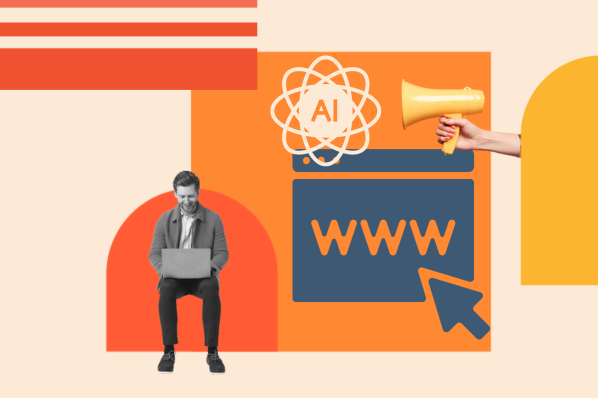
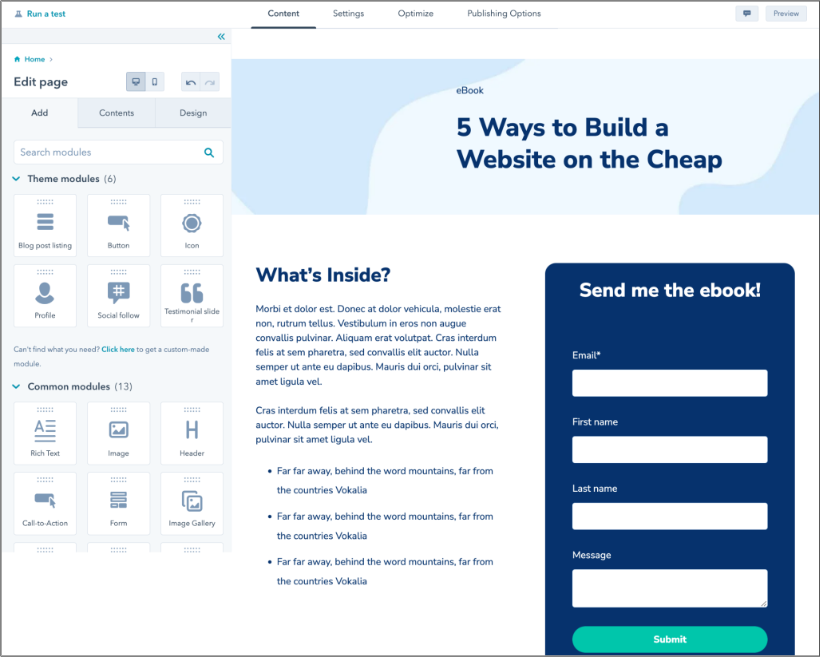
%20hubspot%20ai%20content%20writer%20editing%20email%20copy%201%20(1).webp?)
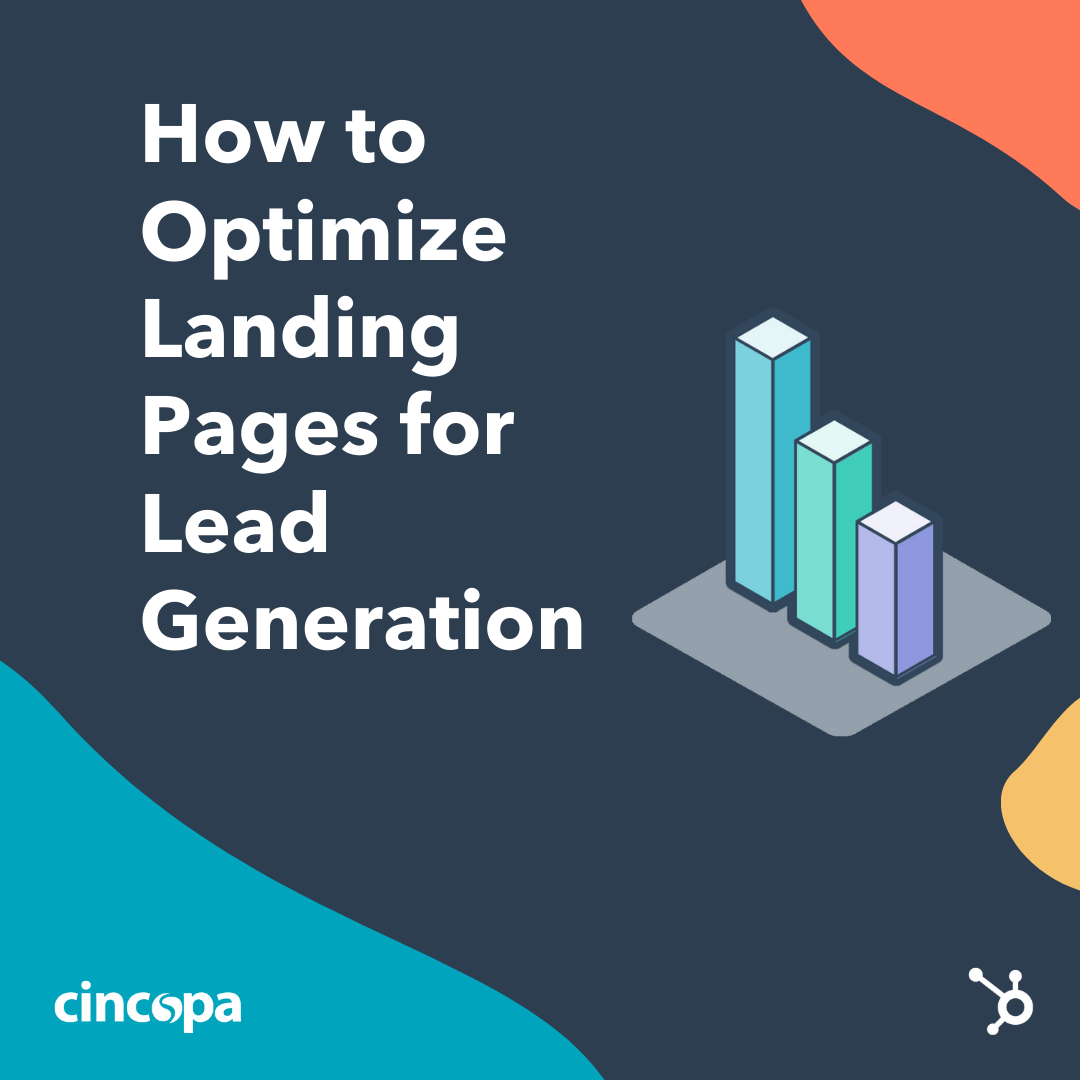
.png?height=613&width=1920)
